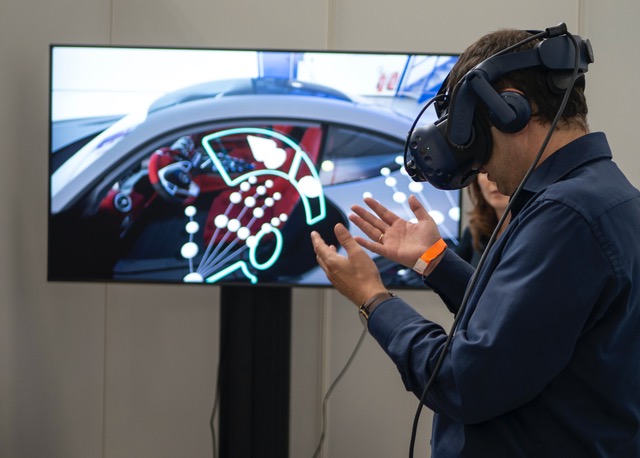Technology is constantly evolving, and this is especially true in the world of large- and small-scale events. From virtual reality to augmented reality, the latest technology is changing the way we experience events and making them more interactive and engaging for attendees.
Virtual reality (VR) technology is one of the most exciting developments in the event industry. VR allows attendees to fully immerse themselves in an experience, whether it’s a concert, a trade show, or a product launch. With VR, attendees can feel like they are at the event, even if they are physically located somewhere else. This can be particularly useful for events that are difficult to attend in person, such as those that are held in remote locations or that have limited capacity.
Augmented reality (AR) technology is also changing the way we experience events. AR involves overlaying digital information onto the real world, making it possible to enhance the physical environment with digital elements. This can be used to create interactive and engaging experiences for attendees. For example, at a trade show, an AR app could be used to provide attendees with additional information about the products on display, or to create a virtual scavenger hunt.
Social media platforms like TikTok, Twitter, Facebook and Instagram allow attendees to share their experiences in real-time, reaching a wider and diverse audience and making events more inclusive. Social media can also be used to create interactive experiences like live polls and Q&A sessions with various groups and varied backgrounds.
Live streaming is also becoming more popular for events. Streaming allows events to be broadcasted to a wider audience and can be a great way to reach people who can’t attend in person.
In addition, the use of beacons and other proximity-based technologies is on the rise. Beacons are small, low-cost devices that can be placed around an event venue. When an attendee’s smartphone comes into proximity with a beacon, it can trigger an action, by sending a push notification with information about the event. This technology can be used to create personalized experiences for attendees and to improve navigation within the event venue.
All of these technological advancements are creating new opportunities for event organizers and attendees alike. Events are more interactive, engaging, and inclusive, and they are also making it easier for attendees to share their experiences with others. However, it’s important to remember that technology should always be used to enhance the event experience, not to replace it. Technology should be used in a way that adds value to the event and makes it more memorable for attendees.
One of the most important ways that technology is changing events is using experiential technology. Experiential technology is designed to create immersive and interactive experiences for attendees. This can include virtual reality, augmented reality, and interactive installations. Experiential technology allows attendees to engage with the event on a deeper level, making it more memorable and meaningful.
One example of experiential technology in action is the use of virtual reality at music festivals. Virtual reality headsets can be used to transport attendees to different parts of the festival, giving them a bird’s-eye view of the event or allowing them to experience a concert from the stage. This creates a unique and memorable experience for attendees, and it’s something that they couldn’t experience without the use of technology.
Experiential technology refers to the use of technology to enhance or create immersive, interactive experiences for attendees at events such as trade shows, conventions, and festivals. One example of experiential technology is interactive installations, which are designed to engage attendees in unique and memorable ways.
For example, the interactive installation in the form of a virtual scavenger hunt could be used to engage attendees at a trade show or convention. The scavenger hunt could involve attendees using their smartphones or tablets to scan QR codes located around the venue, which would then lead them to various interactive exhibits or activities. These exhibits or activities could be related to the products or services being showcased at the event, or they could be completely unrelated.
Another example Virtual reality (VR) can create immersive experiences for attendees. VR can be used to transport attendees to a different location, time, or even dimension, allowing them to experience something that would not be possible in the physical world. This can be particularly effective for events in industries such as travel, architecture, and real estate, where attendees can experience the product or service being showcased in a more engaging and memorable way.
Overall, experiential technology can be a powerful tool for event organizers to create unique and engaging experiences for attendees. It can help to increase attendee engagement, boost brand awareness, and leave a lasting impression on attendees.

